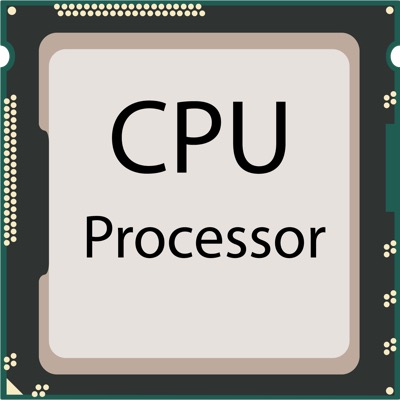Processors: Power, Cores, and Architecture Explained
 In this installment of our series, we focus on the specifics of CPU power, cores, and architecture. Understanding these elements is key to grasping what makes a processor powerful and efficient. We'll break down technical terms like GHz, multi-core CPUs, and CPU architectures from Intel, ARM, and Apple's M series, shedding light on their unique benefits and applications.
In this installment of our series, we focus on the specifics of CPU power, cores, and architecture. Understanding these elements is key to grasping what makes a processor powerful and efficient. We'll break down technical terms like GHz, multi-core CPUs, and CPU architectures from Intel, ARM, and Apple's M series, shedding light on their unique benefits and applications.
In our exploration of computing, terms like GHz, cores, Intel, and ARM processors often come up. These are not just technical jargon; they are key to understanding the power and efficiency of the processors at the heart of our devices. In this section, "Processors: Power, Cores, and Architecture Explained," we’ll demystify these terms and delve into the specifics of what makes a processor powerful and efficient.
Speed and Power
The speed of a CPU, measured in gigahertz (GHz), is a critical factor as it dictates how many operations it can handle in a second. However, it's the intricate dance of these binary states, processed at astonishing speeds, that truly defines a CPU's capability.
Cores – The More, The Merrier
Advancements in CPU technology have led to the development of multi-core processors. Each core, akin to an individual brain, can process its own set of instructions. Therefore, a multi-core CPU can perform multiple tasks simultaneously, significantly enhancing the efficiency and performance of your computer.
The Evolution of CPUs
Over the years, CPUs have evolved, becoming smaller, faster, and more energy-efficient. This remarkable progression is a testament to the advancement in binary processing and transistor technology, enabling the compact yet powerful computers we use today.
Beyond GHz: The Importance of CPU Architecture
While GHz indicates how fast a CPU can turn binary states (our 'light switches') on and off, there's more to a CPU's capability than just speed. Consider it like having a master switch in our building of light switches. A CPU with a more advanced architecture might have a 'master switch' that allows it to perform certain tasks more efficiently than just flipping individual switches rapidly. This master switch could represent advanced CPU features like better data management or optimized pathways for processing information. Therefore, a CPU with a lower GHz but a more effective 'master switch' system could potentially outperform a higher GHz CPU for certain tasks.
In the world of processors, two prominent architectures are Intel and ARM, each with unique strengths. Additionally, Apple's M1 and M2 chips represent a significant evolution in CPU design.
Intel Processors
Intel CPUs are known for their high performance, commonly found in desktops and laptops. They excel in intense computing tasks and multitasking, delivering robust performance at higher clock speeds.
ARM Processors
ARM processors, used in devices like smartphones and tablets, prioritize energy efficiency. They perform a high number of operations per cycle, allowing for cooler operation and less power consumption, ideal for preserving battery life.
Apple's M series Processors
Apple's M series chips are revolutionary in that they combine the high performance typically associated with Intel CPUs with the energy efficiency of ARM architecture. Built on RISC (Reduced Instruction Set Computer) architecture, these chips provide exceptional speed and power efficiency. They are capable of handling demanding tasks such as video editing and graphic design with remarkable energy efficiency. This blend of high performance and low power consumption marks a significant milestone in CPU architecture, offering the best of both worlds.
Understanding these differences is crucial, especially when considering the tasks and environments for CPU operation. Each architecture type - Intel, ARM, and Apple's M series - brings specific advantages, whether it's in raw processing power, energy efficiency, or a balance of both. Therefore, CPU architecture choice extends beyond GHz ratings; it involves considering the type of tasks and balancing power, efficiency, and the nature of the tasks at hand.
Cores: Helping Hands in Binary Processing
The concept of cores in a CPU can be likened to having multiple helping hands to flip switches. If one GHz is like one hand flipping a billion switches a second, then a multi-core CPU is like having several hands working in tandem. Each core operates independently, managing its own set of tasks. This means a quad-core CPU (four cores), for instance, can handle several different operations simultaneously, making the overall process faster and more efficient, especially for multi-threaded tasks like video editing or running multiple applications at once.
Practical Impact of Cores and Architecture:
- Cores: More cores mean your computer can do more things at once without slowing down. It’s like having a team working together, where each member takes on a different task, leading to more efficient overall performance.
- Architecture: A more sophisticated architecture enhances the CPU's ability to handle complex tasks efficiently. It's not just about speed; it's about how smartly the CPU can process the data, manage resources, and execute tasks.
What's Next
With this exploration of processor power, cores, and architecture, we reach a milestone in our ongoing series on the world of computing. From uncovering the everywhere presence of computers in our lives to delving into the intricate workings of processors, we have broadened our understanding of these pivotal technologies. Stay tuned as we continue to explore more fascinating aspects of computing in our upcoming articles.














